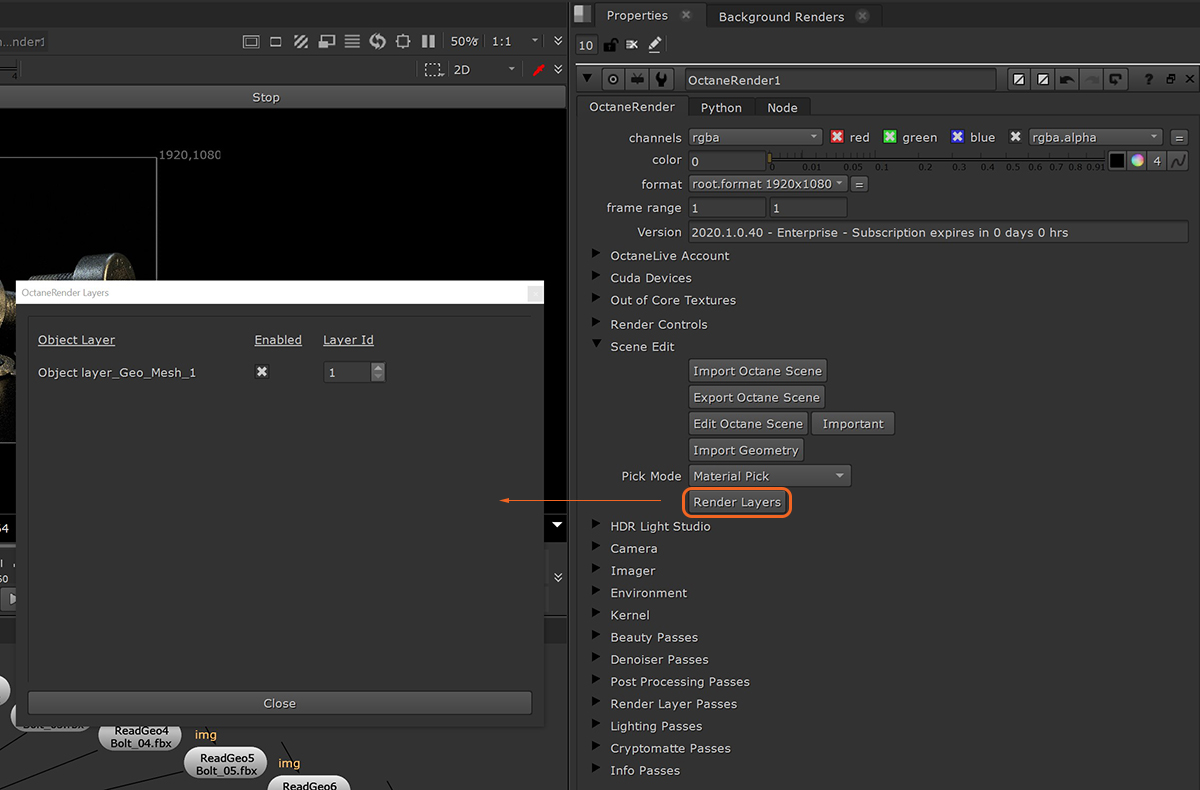
Render layers allow users to separate their scene geometry into parts, where one part is meant to be visible and the rest of the other parts “capture” the side effects of the visible geometry on it. The layers allow different objects to be rendered into separate images where in turn some normal render passes may be applied. The rendered images from each layer can then be recombined during the compositing process.
To set up a scene for rendering in layers, the Active Layer ID number in the Nuke OctaneRender node (Figure 1) must correspond to the Render Layer ID number in an Object Layer node added to scene geometry in the Octane Nodegraph Editor window (Figure 2).

Figure 1: Accessing Object Layer IDs from the OctaneRender node in Nuke

Figure 2: The cooresponding Render Layer ID in an Object Layer node accessible in the Octane Nodegraph Editor window.
For more detailed information pertaining to working with Render LayersRender layers allow users to separate their scene geometry into parts, where one part is meant to be visible and the rest of the other parts “capture” the side effects of the visible geometry. The layers allow different objects to be rendered into separate images where, in turn, some normal render passes may be applied. The Render layers are meant for compositing and not to hide parts of the scene. in the OctaneRender® window, please refer to the OctaneRender® Standalone documentation.